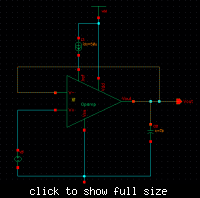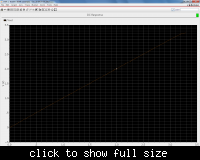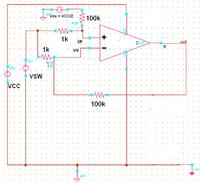thanhtri_pc
Junior Member level 2
Hi all,
I just designed an op-amp and I want to characterize this op-amp. First, I measure the input common-mode range. I draw the the schematic and run DC analysis. I get result as attached picture.


Specification: Vdd = 3.3V, Vss = 0V, V- and Vout are connected together, V+ is swept from 0v to 3.3v.
Please show me how to extract Vinput(max) and Vinput(min)?
Many thanks
I just designed an op-amp and I want to characterize this op-amp. First, I measure the input common-mode range. I draw the the schematic and run DC analysis. I get result as attached picture.


Specification: Vdd = 3.3V, Vss = 0V, V- and Vout are connected together, V+ is swept from 0v to 3.3v.
Please show me how to extract Vinput(max) and Vinput(min)?
Many thanks

